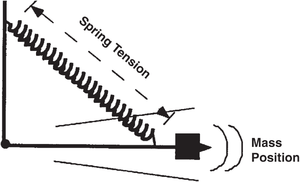Gravity basics
| Exploring for Oil and Gas Traps | |

| |
| Series | Treatise in Petroleum Geology |
|---|---|
| Part | Predicting the occurrence of oil and gas traps |
| Chapter | Applying gravity in petroleum exploration |
| Author | David A. Chapin, Mark E. Ander |
| Link | Web page |
| Store | AAPG Store |
Gravity methods help us identify the size, shape, and depth of anomalous masses. Gravity effectively images lateral density contrasts within the subsurface. It is particularly good at locating geologic structures horizontally. However, it is not as good as magnetics in determining depth to source because density distributions tend to be diffuse in the subsurface.
Uses of gravity
Gravity has the following uses:
- Determining the shape of salt masses
- Locating structures under thrust plates or volcanics
- Locating major faults and determining sense of motion on faults
- Finding reefs
- Locating intrusives
- Defining overall basin configuration
- Determining structural trend continuation between wells and seismic data
- Mapping large tectonic features
Advantages of gravity
Gravity has advantages over other methods:
- Fast, inexpensive tool for evaluating large areas
- Can distinguish sources at exploration depths
- Nondestructive; measures an existing field through a passive measurement
- Can use old data today and easily integrate with new data
- Lends itself to simple enhancements
- Scalar measurement can yield a pseudostructure map
Disadvantages of gravity
Following are the disadvantages of using gravity vs. other methods:
- Needs geological and geophysical constraints to interpret
- Does not directly provide a structural cross section without additional geologic input
- Overlapping anomalies may confuse the interpretation
- Data quality may deteriorate in rougher terrain
- Tends to image gross structures; finer structures are more difficult to image
- Resolution deteriorates with depth
Theory
Gravity effects caused by subsurface geology are superimposed upon the earth's overall gravity field. These effects, called anomalies, are typically less than 100 ppm of the total field. Several corrections are made to remove the earth's field from the total measurement to image these anomalies. For petroleum exploration, gravity is measured in milligals (mGal). Typical exploration anomalies are generally < 25 mGal. Typical gravity sensors are capable of measurements < 0.5 mGal.
Gravity vs. magnetics
Figure 1 is a schematic of the earth, showing its gravity field (left) and magnetic field (right). The gravity field always points downward; thus, the measurements can be scalar. In contrast, the magnetic field can point in any direction; therefore, vector information is more important in interpreting magnetics.
Acquisition and instrumentation
Gravity can be collected on land, at sea, in the air, and by satellite. On land, sea, and air, most sensors consist of a mass at the end of a spring (Figure 2). On land, the instrument is leveled and the mass is set to a null position for reading the spring tension.
In dynamic gravity measurements at sea or in the air, the position of the mass and the spring tension is recorded continuously. The instrument is on a stabilized platform during the measurement to maintain a vertical position. In a dynamic gravity measurement, extra care must be taken to keep track of the platform's position. The resulting gravity is usually not as accurate as land data.
Satellite gravity is derived from satellite radar altimetry of the sea surface. The sea conforms to the gravity field of the earth; the first derivative of the sea surface height is gravity at the sea surface level. Since the satellite can only measure gravity over water, only the marine areas and large lakes have such data. The data quality is somewhat comparable to surface-acquired data, although the wavelength resolution is usually worse for the satellite data.
See also
- Processing gravity data
- Interpreting gravity measurements
- Models of gravity anomalies
- Examples of gravity applications

